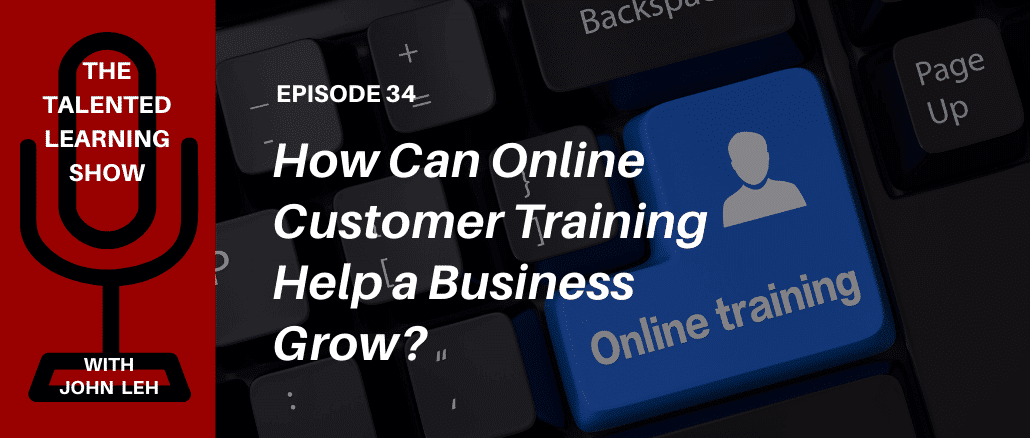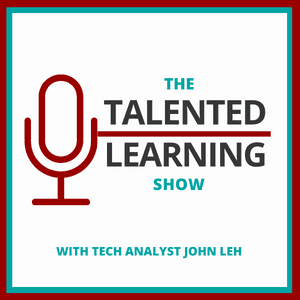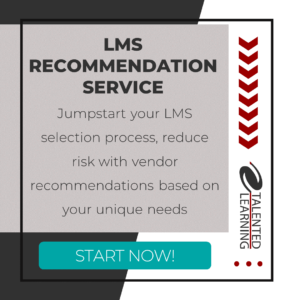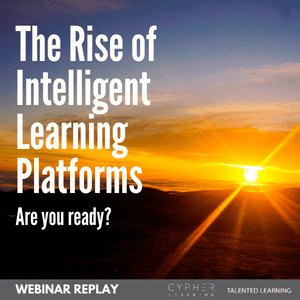
Podcast: Play in new window | Download
Subscribe: Apple Podcasts | Spotify | Amazon Music | Android | iHeartRadio | Blubrry | Email | RSS
EPISODE 34 – TOPIC SUMMARY AND GUEST:
 That’s why I’m especially excited to talk with today’s guest, As I’ve noted previously, customer training continues to be the hottest segment of the extended enterprise learning landscape. Companies everywhere are looking for guidance to establish or expand their online customer training programs.
That’s why I’m especially excited to talk with today’s guest, As I’ve noted previously, customer training continues to be the hottest segment of the extended enterprise learning landscape. Companies everywhere are looking for guidance to establish or expand their online customer training programs.
Brittany Tamul. As Director of Customer Success at ArrowStream, a high-growth foodservice supply chain software company, Brittany works on the front lines of online customer education every day. In fact, she recently spearheaded the launch of an ambitious shift to online customer education. And now, she’s sharing some of her best advice with the rest of us.
KEY TAKEAWAYS:
- As companies grow, they often struggle to onboard customers efficiently and effectively. In these situations, online customer education can make a significant business impact.
- Online customer education isn’t a cure-all, but it can be an essential part of a broader learning strategy. When getting started, be sure to define success metrics to benchmark at the outset and measure over time.
- Online training doesn’t need to jeopardize the quality of customer relationships. On the contrary, a blend of high-tech and high-touch can actually enhance the customer experience.
Q&A HIGHLIGHTS:
Brittany, for those who aren’t familiar with foodservice supply chain software, could you tell us a bit about ArrowStream?
Absolutely. Whenever you order an item from a restaurant menu, a complex process is working in the background to ensure that all the right ingredients are on-hand, so the kitchen can prepare that item for you.
ArrowStream helps restaurants tackle this challenge with data analytics they need to track, analyze and manage their inventory more efficiently and effectively. This ensures that you consistently enjoy a great dining experience and leave as a happy customer.
Cool. Who are some of your customers?
All of our customers are foodservice industry companies. For example, we work with quick-serve restaurants like Dairy Queen and Shake Shack. We also work with upscale dining brands. For instance, today I’ve been working with Fogo De Chão, which is a wonderful brand with roots in Brazilian steakhouse fare.
Our community of foodservice operators is diverse in terms of each organization’s size and menu concept. However, they all share a common bond – the need for technology that ensures their operations run smoothly.
Big-name customers! So what’s the role of employees who use your software at these companies?
Our technology is typically used by supply chain teams – procurement, distribution and logistics specialists – to optimize their daily tasks, as well as long-term value-adds for their organization.
But interestingly, the typical ArrowStream user profile has changed over time. With so much explosive growth in the foodservice market, we’re seeing many younger technology-driven people entering the field. And we’ve responded by adjusting the way we deliver our technology, as well as learning content.
We see this dynamic in a lot of organizations now, with the changing of the guard, so-to-speak. As digital natives enter the workforce, it really affects the way you engage learning audiences.
Yes, it does.
So let’s talk about your position as Director of Customer Success. What are your responsibilities and what led you to this role?
At ArrowStream, the customer success function is frontline support and training for our customers. I actually grew into this role after years in account management, where I worked directly with customers to build relationships and help them use our technology to optimize their business results. I also delivered additional applications to them.
So with my love of working with customers, coupled with my background in training and education, I was excited to pursue this new position when it became available.
Because your product is fairly sophisticated, I assume that training is essential to ensure that customers use it successfully.
That’s true. As you mentioned, because our product is complex, it does require a bit of training to be sure our customers use it to its fullest. Ultimately, it’s about empowering them to manage their supply chain tasks proactively, rather than reactively.
Tell us more. What role does training play in your customers’ success?
For us, customer success has become one of the core functions of our organization, and training is an integral aspect of that.
Here’s why. Since 2013, our customer retention rate has been 100%, while over the past 3 years, our annual growth rate has been nearly 40%.
Impressive…
But of course, with so many new customers, we recognize that we need a scalable model for learning.
Smart move. What form does your product training take?
Previously, all our customer training was based on an instructor-led model. It made sense because we’re a customer-centric company.
That’s one of our organization’s core tenants. What better way to demonstrate this commitment than to put our personnel face-to-face with our customers at product training sessions?
I see…
But again, scalability is also essential. And because we’ve seen such strong growth, we recognize that a more viable long-term strategy needs to align with how we think about technology. For us, that’s where Thought Industries has come in as an online customer education platform.
How does that work?
We’ve woven online customer education into what we do with our customers throughout the learning process.
So, with instructor-led training (ILT), they get a personal touch through direct interaction with our team. But now they also have access to foundational product knowledge through online learning courses and modules.
Nice. So tell me about your content mix. What does that look like in terms of media?
Our content mix has changed with the integration of our online customer education platform. A great example is how we approach the implementation process.
Previously, when our customers implemented our platform, they typically took about 13 hours of instructor-led training. So that meant 13 hours of our personnel resources were also required. But now because we weave-in digital content, we’ve been able to reduce that staff commitment.
How so?
Several examples:
- We now offer online presentations for step-by-step instructions.
- We also leverage videos to provide a personal touch for some complex processes that require additional aid and help.
- Plus we use hotspots, because our system includes numerous icons that are designed to lead users in a particular direction. These are also wonderful for giving learners immediate access to knowledge about the various aspects of our system that can help them accomplish their goals.
Good stuff. And how well is this blended learning approach working?
Currently, with our online content focused on introducing customers to our system, we’ve decreased our team’s ILT time commitment for product implementation training from 13 hours to 9 hours.
In other words, our ILT time commitment has decreased by about 40%. But we’re still providing a positive customer experience that includes instructor-led training.
Wow. So you’ve reduced ILT staff time by about 4 hours per customer. Does that mean online onboarding helps your customers save time, too?
Yes. By trimming 4 hours from our ILT staffing requirements for implementation training, we’ve also reduced the customer’s time commitment to about 1.5-2 hours. So it’s a win-win. Everyone benefits.
Are you seeing other advantages?
Absolutely. Interestingly, the addition of online customer education has also shifted the quality of ILT conversations.
In other words, because customers are getting baseline knowledge through online materials, when we’re together, people aren’t asking questions like, “What does this button do?”
Instead, questions are more strategic. For example, “How does this button drive value back to my organization?” Or, “How can this function help me uncover opportunities to drive more growth for my company?”
Fantastic. And do you travel to your clients for ILT sessions or do they come to you?
It’s a mix. It’s about a 50-50 split between our team traveling to customer sites and their personnel traveling to our offices in Chicago. It depends upon the number of people on the customer’s supply chain team.
But I think you’ve raised another valid point. A reduction in ILT time leads to benefits in terms of reduced travel time, whether it’s for our team or for our customers’ teams.
Makes sense. So do you focus more of your resources on client implementation and onboarding – or on growing customer skills over time?
It’s fairly balanced. As we bring new modules and applications into our suite, we have an opportunity to offer our customers continuing education. We can also provide refreshers about our applications and how they can help our customers maximize value, over time.
Implementation is still a critical piece of that. And fortunately, with our strong rate of customer acquisition, implementation training remains steady.
That’s great. So, do you find that training paths or certification opportunities appeal to your customers? Or do they want to be able to find what they want to know on-demand, in a self-serve mode?
Initially, we mapped online content to a specific learning path. That’s because the ArrowStream system offers a “guided” user experience.
There’s a particular workflow to the way users manage data in our system and use analytics based on their data. So it makes sense to lay-out a learning path for new customers as they develop baseline system knowledge.
But then they can build on that knowledge continuously, as they get deeper and deeper into the technology.
I love metrics. So you captured my heart when you started dropping numbers…
• 100% customer retention
• 40% reduction in ILT delivery time.
What success metrics are important for you to measure? And how do you know if you’re successful?
I love numbers too. Several other metrics reveal strong adoption of online learning content. For instance, we’ve seen a 182% increase in customer log-ins since we launched the Thought Industries platform.
We see learners returning to the platform for knowledge. We also see new learners entering every month, which contributes to increased product adoption.
And for us, that speaks for itself. It tells us we’re producing a product that is helping our customers improve their use of our system and maximize its value to their organizations.
Good stuff…
Here’s another metric that’s really exciting for us. Previously, we delivered an average of 15-20 ILT sessions a month for new personnel entering our customer base who needed foundational product knowledge.
Now, our average is around 3-5 live new customer training sessions a month. So we’ve seen a 74% decrease in the number of ILT training requests we receive from customers.
That means online training is providing new customers with enough early knowledge for them to apply the system successfully in their organization.
Excellent. So what’s your pricing strategy for training? Do you charge separately? Or is it built into your overall product pricing?
We include training with our services. That’s because our customers aren’t just purchasing our software – they’re purchasing the team behind it. And training is a big part of that.
We want our customers to be successful without any barriers along the way.
How does a typical customer find your educational content? How do they get into the system and how do they know what to take?
That’s a great question. We’ve been very focused on promoting Thought Industries content to our customers and the idea that they can supplement what they know about our system with those online materials.
Here’s one strategy that has worked very well for us. As an agile technology shop, we release new product code every three weeks. At that point, we communicate with our customers about system enhancements and other changes.
We’ve leveraged that product release pattern, knowing that our customers are accustomed to reading periodic release notes to find out what’s new in the system. So we use that same communications cadence to share information about online customer education resources.
This naturally ensures that customers will stay up-to-date with new learning material. It also helps lead them back to our courses and a potential review of what’s already there.
Excellent. How do you find out what training content is working – or not? What metrics do you track in LMS reports? And what kind of feedback do you collect directly from customers…?
…For complete answers to this question and more LISTEN TO THE FULL 30-MINUTE PODCAST!
Need Proven LMS Selection Guidance?
Looking for a learning platform that truly fits your organization’s needs? We’re here to help! Submit the form below to schedule a free preliminary consultation at your convenience.





